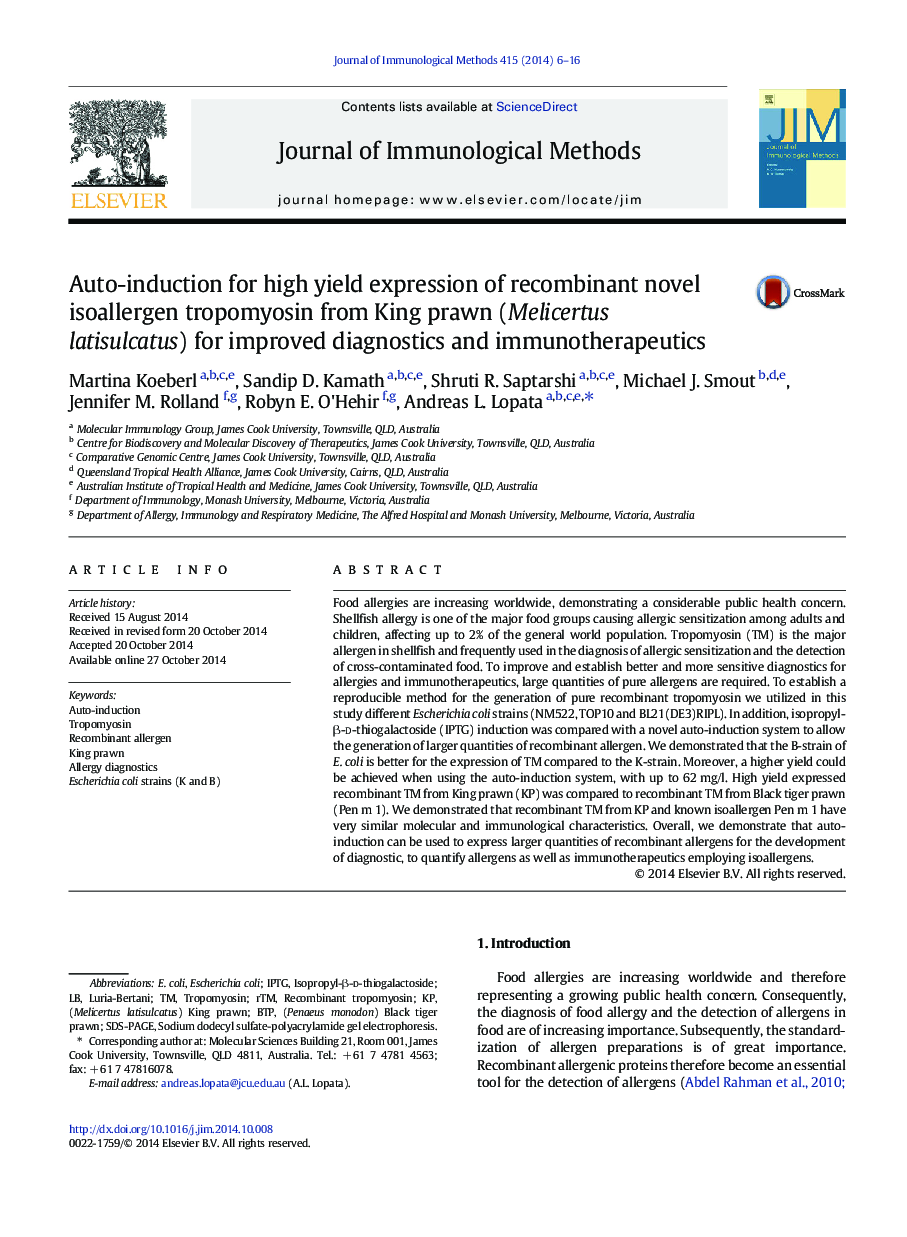| Article ID | Journal | Published Year | Pages | File Type |
|---|---|---|---|---|
| 2088160 | Journal of Immunological Methods | 2014 | 11 Pages |
•Auto-induction can be used to generate higher yields of recombinant allergens.•The B-strain of E. coli leads to higher yield than the K-strain of E. coli.•Recombinant tropomyosin (rTM) of King prawn (KP) was expressed with a high yield.•rTM of KP has similar molecular and immunological characteristics as an isoallergen.•Patient IgE reactivity is species-specific to recombinant tropomyosin isoallergens.
Food allergies are increasing worldwide, demonstrating a considerable public health concern. Shellfish allergy is one of the major food groups causing allergic sensitization among adults and children, affecting up to 2% of the general world population. Tropomyosin (TM) is the major allergen in shellfish and frequently used in the diagnosis of allergic sensitization and the detection of cross-contaminated food. To improve and establish better and more sensitive diagnostics for allergies and immunotherapeutics, large quantities of pure allergens are required. To establish a reproducible method for the generation of pure recombinant tropomyosin we utilized in this study different Escherichia coli strains (NM522, TOP10 and BL21(DE3)RIPL). In addition, isopropyl-β-d-thiogalactoside (IPTG) induction was compared with a novel auto-induction system to allow the generation of larger quantities of recombinant allergen. We demonstrated that the B-strain of E. coli is better for the expression of TM compared to the K-strain. Moreover, a higher yield could be achieved when using the auto-induction system, with up to 62 mg/l. High yield expressed recombinant TM from King prawn (KP) was compared to recombinant TM from Black tiger prawn (Pen m 1). We demonstrated that recombinant TM from KP and known isoallergen Pen m 1 have very similar molecular and immunological characteristics. Overall, we demonstrate that auto-induction can be used to express larger quantities of recombinant allergens for the development of diagnostic, to quantify allergens as well as immunotherapeutics employing isoallergens.
Graphical abstractFigure optionsDownload full-size imageDownload as PowerPoint slide
